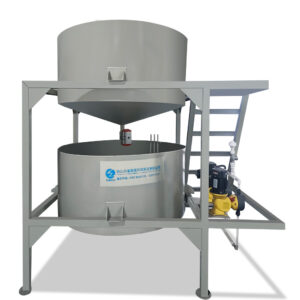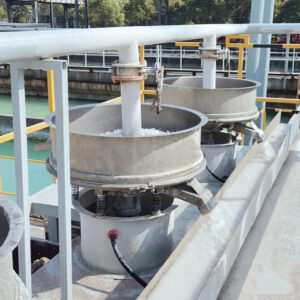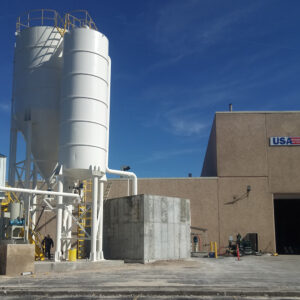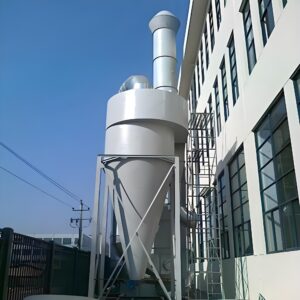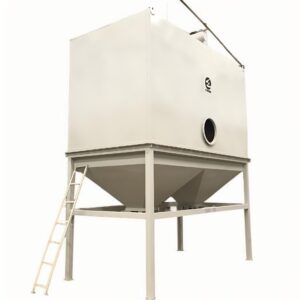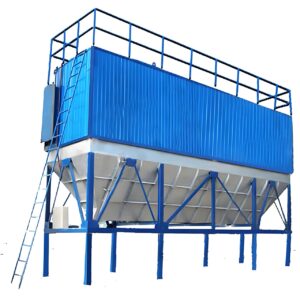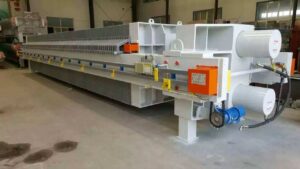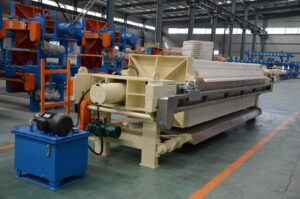Bridge sandblasting is a critical process in the maintenance and restoration of bridges, ensuring their longevity and structural integrity. As an essential component of bridge preservation, sandblasting removes corrosion, old paint, and contaminants, preparing the surface for new protective coatings. This article delves into the best applications of bridge sandblasting solutions, exploring the techniques, equipment, and considerations that make this process effective and efficient.
The importance of bridge sandblasting cannot be overstated in the realm of infrastructure maintenance. It not only extends the lifespan of bridges but also enhances their appearance and safety. From small pedestrian bridges to massive steel structures spanning rivers, sandblasting plays a crucial role in preserving these vital components of our transportation network.
As we explore the world of bridge sandblasting, we'll uncover the various methods, equipment, and best practices that industry professionals employ. We'll examine the challenges faced during the process and the innovative solutions developed to overcome them. Whether you're a seasoned contractor or simply curious about the intricacies of bridge maintenance, this comprehensive guide will provide valuable insights into the art and science of bridge sandblasting.
Bridge sandblasting is a cornerstone of effective bridge maintenance, crucial for removing corrosion and preparing surfaces for new protective coatings. It significantly extends the lifespan of bridges and ensures their structural integrity and safety for years to come.
What are the primary purposes of bridge sandblasting?
Bridge sandblasting serves several critical functions in the maintenance and restoration of bridge structures. At its core, this process is about preparing surfaces for further treatment and ensuring the longevity of the bridge.
The primary purposes of bridge sandblasting include removing old paint, rust, and corrosion from metal surfaces, eliminating contaminants that could interfere with new coatings, and creating a profile on the surface that allows for better adhesion of new protective layers. This process is essential for both aesthetic and structural reasons.
Delving deeper, bridge sandblasting is not just about cleaning. It's a crucial step in the overall maintenance strategy of any bridge. By thoroughly removing all traces of decay and contamination, sandblasting allows engineers and maintenance crews to inspect the underlying structure for any signs of damage or wear that may have been hidden beneath layers of paint or rust.
Professional bridge sandblasting can extend the life of a bridge by up to 25 years when combined with proper repainting and ongoing maintenance. This significant increase in lifespan underscores the importance of thorough and regular sandblasting as part of a comprehensive bridge preservation program.
| Purpose | Benefit |
|---|---|
| Corrosion Removal | Prevents structural weakening |
| Surface Preparation | Ensures better coating adhesion |
| Contaminant Elimination | Improves overall bridge integrity |
| Inspection Facilitation | Allows for thorough structural assessment |
In conclusion, the primary purposes of bridge sandblasting extend far beyond simple cleaning. This process is a fundamental aspect of bridge maintenance, crucial for ensuring the safety, longevity, and aesthetic appeal of these vital infrastructure components.
How does sandblasting compare to other surface preparation methods for bridges?
When it comes to preparing bridge surfaces for maintenance or restoration, sandblasting stands out as a highly effective method. However, it's essential to understand how it compares to other surface preparation techniques to appreciate its advantages fully.
Sandblasting, also known as abrasive blasting, involves propelling abrasive materials at high velocity against a surface to remove contaminants and create a suitable profile for coating adhesion. Compared to manual scraping, wire brushing, or chemical stripping, sandblasting is significantly more efficient and thorough.
While chemical stripping might be less abrasive, it often involves hazardous materials and can be time-consuming. Mechanical methods like grinding or needle scaling can be effective for smaller areas but are labor-intensive and may not provide the uniform surface profile that sandblasting achieves.
Studies have shown that sandblasting can clean up to 100 square feet per hour, depending on the surface condition and equipment used. This rate is typically 5-10 times faster than manual scraping or wire brushing, making it the preferred method for large-scale bridge preparation projects.
| Method | Speed | Uniformity | Environmental Impact |
|---|---|---|---|
| Sandblasting | High | Excellent | Moderate |
| Chemical Stripping | Low | Good | High |
| Manual Scraping | Very Low | Poor | Low |
| Needle Scaling | Low | Good | Low |
In conclusion, while each surface preparation method has its place, sandblasting offers a unique combination of speed, thoroughness, and versatility that makes it particularly well-suited for bridge maintenance. Its ability to quickly and effectively prepare large surfaces while creating an ideal profile for coating adhesion sets it apart from other methods in the field of bridge restoration.
What types of abrasive materials are best suited for bridge sandblasting?
Selecting the right abrasive material is crucial for effective bridge sandblasting. The choice of abrasive can significantly impact the quality of the surface preparation, the speed of the process, and even environmental considerations.
Common abrasive materials used in bridge sandblasting include silica sand, garnet, coal slag, steel grit, and crushed glass. Each of these materials has unique properties that make them suitable for different aspects of bridge sandblasting.
The selection of abrasive material depends on various factors such as the bridge's surface material, the level of contamination, the desired surface profile, and environmental regulations. For instance, steel grit is excellent for heavy rust removal on steel bridges, while crushed glass might be preferred for its lower environmental impact.
Research indicates that using recyclable abrasives like steel grit can reduce waste by up to 95% compared to single-use abrasives. This not only reduces environmental impact but can also lead to significant cost savings over the course of large bridge sandblasting projects.
| Abrasive Material | Hardness | Recyclability | Best For |
|---|---|---|---|
| Silica Sand | Medium | Low | General use |
| Garnet | High | Medium | Tough coatings |
| Coal Slag | Medium-High | Low | Heavy rust |
| Steel Grit | Very High | High | Steel surfaces |
| Crushed Glass | Medium | Medium | Eco-friendly option |
In conclusion, the choice of abrasive material for bridge sandblasting is a critical decision that impacts both the efficiency of the process and its environmental footprint. By carefully considering the specific needs of each project and the properties of different abrasives, professionals can optimize their sandblasting operations for maximum effectiveness and sustainability.
What safety precautions are essential during bridge sandblasting operations?
Safety is paramount in any bridge sandblasting operation. The process involves high-pressure equipment, abrasive materials, and often takes place at significant heights, making it inherently risky. Therefore, implementing comprehensive safety measures is crucial to protect workers, the public, and the environment.
Key safety precautions include proper personal protective equipment (PPE) for workers, such as respiratory protection, protective clothing, and eye and ear protection. Containment systems are essential to prevent abrasive materials and debris from contaminating the surrounding environment, especially when working over water bodies.
Beyond personal safety, environmental considerations play a significant role. Proper disposal of spent abrasives, especially when dealing with lead-based paint removal, is critical. Additionally, noise control measures should be implemented to minimize disruption to nearby communities.
According to OSHA statistics, proper use of PPE can reduce workplace injuries by up to 50% in sandblasting operations. This underscores the critical importance of not only providing but also enforcing the use of appropriate safety equipment in bridge sandblasting projects.
| Safety Measure | Purpose | Implementation |
|---|---|---|
| Respiratory Protection | Prevent inhalation of dust | Use of NIOSH-approved respirators |
| Containment Systems | Prevent environmental contamination | Tarps, vacuum systems, water curtains |
| Fall Protection | Prevent falls from height | Harnesses, safety nets, scaffolding |
| Noise Control | Reduce noise pollution | Sound barriers, equipment selection |
| Hazardous Material Handling | Safe disposal of contaminated waste | Proper collection and certified disposal |
In conclusion, safety in bridge sandblasting operations requires a multifaceted approach that addresses personal protection, environmental safeguards, and public safety. By rigorously implementing and adhering to these safety precautions, contractors can ensure the well-being of their workers, protect the environment, and maintain positive relations with surrounding communities.
How does environmental regulation impact bridge sandblasting practices?
Environmental regulations play a significant role in shaping bridge sandblasting practices. As awareness of environmental issues has grown, so too have the regulations governing industrial processes like sandblasting, particularly when conducted on structures over water bodies or in densely populated areas.
One of the primary concerns is the containment and disposal of spent abrasives and removed materials, especially when dealing with lead-based paints common on older bridges. Regulations often require sophisticated containment systems to prevent these materials from entering the environment.
Air quality regulations also impact sandblasting operations, necessitating dust control measures and sometimes restricting the types of abrasives that can be used. Water quality protection is another crucial aspect, particularly for bridges spanning rivers or other water bodies.
The EPA estimates that proper containment during bridge sandblasting can prevent up to 99.9% of removed paint and abrasive materials from entering the environment. This high efficiency is crucial for compliance with environmental regulations and protecting ecosystems around bridges.
| Regulatory Aspect | Impact on Sandblasting | Compliance Method |
|---|---|---|
| Air Quality | Limits dust emissions | Dust collection systems |
| Water Protection | Prevents contamination | Containment booms, water filtration |
| Waste Disposal | Regulates handling of waste | Certified disposal facilities |
| Noise Control | Limits operational hours | Sound barriers, equipment selection |
| Lead Abatement | Strict handling procedures | Specialized containment and disposal |
In conclusion, environmental regulations have significantly influenced bridge sandblasting practices, driving innovations in containment technology, abrasive material selection, and waste management. While these regulations can add complexity and cost to projects, they are essential for protecting public health and preserving the environment around these critical infrastructure elements.
What are the latest technological advancements in bridge sandblasting equipment?
The field of bridge sandblasting has seen significant technological advancements in recent years, aimed at improving efficiency, safety, and environmental protection. These innovations have transformed the way sandblasting is performed on bridges, making the process more effective and less harmful to workers and the environment.
One of the most notable advancements is the development of automated sandblasting systems. These robotic systems can navigate complex bridge structures, maintaining consistent distance and angle to the surface, resulting in more uniform preparation. This not only improves the quality of the work but also reduces worker fatigue and exposure to hazardous conditions.
Another important innovation is the introduction of PORVOO dust collection systems. These advanced systems capture and filter abrasive particles and debris at the source, significantly reducing environmental impact and improving air quality for workers. The bridge sandblasting equipment has revolutionized the industry by offering powerful, portable solutions for on-site dust control.
Recent studies show that automated sandblasting systems can increase productivity by up to 40% compared to manual methods, while also reducing worker exposure to hazardous conditions by up to 80%. This dual benefit of improved efficiency and safety makes these systems increasingly attractive for large-scale bridge maintenance projects.
| Technology | Benefit | Application |
|---|---|---|
| Automated Systems | Increased efficiency and safety | Large-scale bridge projects |
| Advanced Dust Collection | Improved air quality and environmental protection | All bridge sandblasting operations |
| Precision Nozzle Technology | Better surface profile control | Detailed work on complex structures |
| Recycling Systems | Reduced waste and cost | Environmentally sensitive areas |
| Digital Monitoring | Real-time quality control | High-precision projects |
In conclusion, technological advancements in bridge sandblasting equipment have significantly enhanced the efficiency, safety, and environmental friendliness of these operations. From automated systems to advanced dust collection technology, these innovations are shaping the future of bridge maintenance and restoration, ensuring that our critical infrastructure can be maintained more effectively and sustainably than ever before.
How does bridge sandblasting contribute to overall bridge maintenance and longevity?
Bridge sandblasting plays a crucial role in the comprehensive maintenance strategy of bridges, contributing significantly to their longevity and structural integrity. By thoroughly cleaning and preparing surfaces, sandblasting sets the stage for effective protection against corrosion and decay, which are the primary threats to bridge longevity.
The process of sandblasting removes not only visible contaminants but also microscopic impurities that can compromise the adhesion of protective coatings. This thorough cleaning allows for a much more effective application of paints and sealants, which in turn provides long-lasting protection against environmental factors.
Moreover, regular sandblasting as part of a maintenance routine allows for early detection of structural issues. By stripping away old coatings and corrosion, inspectors can more easily identify and address potential problems before they become critical, thereby extending the bridge's lifespan and reducing the need for costly major repairs.
Studies have shown that bridges that undergo regular sandblasting and repainting as part of their maintenance schedule can have their service life extended by 15-30 years compared to those that receive only minimal maintenance. This significant increase in lifespan underscores the importance of sandblasting in bridge preservation strategies.
| Maintenance Aspect | Role of Sandblasting | Long-term Benefit |
|---|---|---|
| Corrosion Prevention | Removes existing rust and prepares for coating | Extends structural integrity |
| Coating Adhesion | Creates optimal surface profile | Improves coating longevity |
| Inspection Facilitation | Reveals hidden structural issues | Enables proactive maintenance |
| Aesthetic Maintenance | Restores original appearance | Enhances public perception and value |
| Load Capacity Preservation | Prevents weight increase from paint buildup | Maintains bridge's designed functionality |
In conclusion, bridge sandblasting is not just a cosmetic procedure but a fundamental component of bridge maintenance that directly contributes to the longevity and safety of these critical structures. By providing a clean slate for protective coatings and facilitating thorough inspections, sandblasting helps ensure that bridges can continue to serve their vital role in our transportation infrastructure for decades to come.
What are the cost considerations and return on investment for bridge sandblasting projects?
When evaluating bridge sandblasting projects, cost considerations and return on investment (ROI) are crucial factors for decision-makers. While the initial costs of sandblasting can be significant, the long-term benefits often justify the investment, particularly when considering the extended lifespan and reduced maintenance needs of properly treated bridges.
The costs associated with bridge sandblasting include equipment rental or purchase, labor, abrasive materials, containment systems, and disposal of waste materials. Additional factors such as bridge size, location, and condition can significantly impact the overall project cost. However, these upfront expenses should be weighed against the long-term savings in maintenance and the extended service life of the bridge.
The return on investment for bridge sandblasting projects is typically realized through reduced frequency of major repairs, extended intervals between repainting, and the overall extension of the bridge's useful life. Moreover, the improved structural integrity resulting from proper maintenance can prevent costly emergency repairs or even bridge replacement.
An analysis of bridge maintenance costs shows that proactive sandblasting and recoating can reduce long-term maintenance expenses by up to 40% over the life of the bridge compared to reactive maintenance strategies. This significant cost saving demonstrates the strong ROI potential of regular sandblasting as part of a comprehensive bridge maintenance program.
| Cost Factor | Typical Range | ROI Consideration |
|---|---|---|
| Equipment | $10,000 – $100,000+ | Reusable for multiple projects |
| Labor | $50 – $150 per hour | Skilled labor ensures quality results |
| Abrasives | $0.15 – $1.00 per sq ft | Recyclable options can reduce costs |
| Containment | 15-30% of project cost | Prevents environmental fines and damage |
| Disposal | $50 – $200 per ton | Proper disposal prevents future liabilities |
In conclusion, while bridge sandblasting projects can represent a significant upfront investment, the long-term benefits in terms of reduced maintenance costs, extended bridge lifespan, and improved safety make it a worthwhile expenditure. By carefully considering both immediate costs and long-term returns, decision-makers can justify the investment in sandblasting as a key component of effective bridge maintenance strategies.
In conclusion, bridge sandblasting stands as a cornerstone of effective bridge maintenance and preservation. Throughout this exploration of its applications, we've seen how this process contributes significantly to the longevity, safety, and aesthetic appeal of bridges worldwide. From removing corrosion and preparing surfaces for new protective coatings to facilitating thorough inspections, sandblasting plays a multifaceted role in bridge care.
We've examined the various aspects of bridge sandblasting, including the selection of appropriate abrasive materials, essential safety precautions, environmental considerations, and technological advancements in equipment. Each of these elements contributes to making modern bridge sandblasting more efficient, safe, and environmentally friendly than ever before.
The impact of environmental regulations on sandblasting practices has driven innovation in containment and waste management systems, ensuring that this vital maintenance process can be carried out with minimal impact on surrounding ecosystems. Furthermore, the cost considerations and return on investment analysis reveal that while sandblasting represents a significant upfront cost, its long-term benefits in extending bridge lifespan and reducing maintenance needs make it a wise investment.
As we look to the future of infrastructure maintenance, it's clear that bridge sandblasting will continue to evolve, driven by technological advancements and a growing emphasis on sustainability. The development of more efficient, automated systems and environmentally friendly abrasives promises to further enhance the role of sandblasting in preserving our critical transportation infrastructure.
In an era where aging infrastructure poses significant challenges, the importance of effective maintenance strategies cannot be overstated. Bridge sandblasting, as a key component of these strategies, will remain crucial in ensuring that our bridges continue to stand strong, connecting communities and facilitating commerce for generations to come.
External Resources
Bridge Blasting – Professional Construction and Remodeling Forum – A discussion thread on a construction forum where a contractor seeks advice on sandblasting and painting the bottom beams of a local township bridge, including considerations for containment and working over a stream.
Painting the Bridge – Bridge Maintenance | Golden Gate – An article from the Golden Gate Bridge website detailing the ongoing maintenance and painting process of the bridge, including the use of sandblasting or flame cleaning for surface preparation before painting.
Sandblasting and Surface Prep for Bridges | Rapid Prep, LLC – Information from Rapid Prep, LLC, on the use of sandblasting and surface preparation equipment for steel and concrete bridges, with a focus on safety considerations and lead abatement.
Bridge Maintenance and Painting – Federal Highway Administration – While not directly linked to sandblasting, this resource provides comprehensive information on bridge maintenance practices, which often include sandblasting as a preparatory step.
OSHA Guidelines for Abrasive Blasting – The Occupational Safety and Health Administration (OSHA) provides guidelines for safe abrasive blasting practices, which are crucial for any bridge sandblasting project.
American Galvanizers Association – Surface Preparation – The American Galvanizers Association offers resources on surface preparation techniques, including sandblasting, which is essential for ensuring proper coating adhesion on bridge structures.
- Environmental Protection Agency (EPA) – Lead-Based Paint Activities – The EPA provides guidelines and regulations for lead abatement during bridge painting projects, which often involve sandblasting to remove old paint and prepare the surface.


